A recent survey indicates that a whopping 90 percent of higher education students — those attending two-year colleges, four-year universities, and graduate programs — have used artificial intelligence (AI) in their academic work.
Students are clearly leading the way when it comes to AI in higher education. But faculty report using AI sparingly in their teaching, and just 9 percent of college and university tech leaders feel their institutions are prepared to handle the rise of AI. On top of that, most universities are still in the early stages of implementing AI tools that would support administrative functions.
If students are already on board, what accounts for the institutional lag?
The hesitation to adopt AI is partly due to concerns about academic integrity. Thanks to the easy accessibility of AI tools, it’s no longer a given that coursework was produced by students themselves. (And for teachers, it’s hard to tell the difference.) Additionally, few faculty members are fully versed in how AI works, how to evaluate its outputs, and how to use it effectively in teaching. These concerns have slowed down adoption.
Despite these issues, AI has a lot to offer in the education space.
Most experts have already concluded that AI cannot be ignored in this setting, and higher ed professionals seem to agree: 93 percent of them expect to increase their use in the years ahead.
In this article, we cover all the essentials around AI and higher education, including how it can optimize operations, the benefits and challenges associated with its use, and some strategies you can use to implement AI in higher ed. We also cover Jotform Education AI Agents, a tool that allows your school to ramp up with AI quickly and easily.
TL;DR: AI is impacting nearly all aspects of university life, from teaching and learning to the way schools are run. Students are benefiting from AI-powered learning platforms that can create personalized learning experiences, for example, as well as gaining valuable tools for research and analysis. Teachers have the option to automate grading and apply AI insights to improve student performance. Operations and administrative teams can use AI to help campuses run more smoothly in the areas of procurement, admissions, student aid, and more. Key challenges, from plagiarism risks to algorithmic bias, can be addressed with ethical governance, faculty training, and pilot programs. Tools like Jotform Education AI Agents are making AI integration more accessible, automating admissions, feedback, and student support processes for colleges and universities of all sizes.
AI as critical campus infrastructure
Just a few years ago, talk about artificial intelligence in college settings primarily centered around students and their use of tools like ChatGPT. Now, however, an increasing number of institutions have come to realize there’s more to AI than essay-writing chatbots. The future of edtech encompasses a world of AI tools that can help schools run more efficiently and interact with students more effectively.
Admissions officers, for example, can use AI to help process large numbers of applications and deliver timely responses. They can also create more personalized experiences with AI to engage prospective students, such as virtual campus tours, virtual classroom experiences, and targeted communications. AI tools can even guide students through the application process, answering questions and offering assistance in real time.
HR teams can leverage AI to help them attract and retain faculty. Many HR professionals are already using it to screen candidates, handle aspects of onboarding, and even draft engagement surveys. Teams may also begin using it soon to plan for future staffing needs, match applicants to suitable jobs (rather than have them apply only for a specific role), and detect employee sentiment to call attention to engagement issues sooner.
Another common use of AI in higher education is student success tracking. Not only can artificial intelligence forecast student performance but it can also identify possible learning challenges that may require intervention. This allows teachers to better allocate their time and resources, and it boosts students’ chances of success.
AI holds a lot of promise. However, there are also elements of risk involved.
Data privacy and transparency are among the biggest concerns. AI processes huge amounts of data, much of which is personal data (names, addresses, finance information, etc.). It’s becoming increasingly difficult for people to know when their data is being used and for what purpose. It’s also more difficult to secure some AI models against hackers.
| Benefits of AI in Higher Education | Challenges of AI in Higher Education (with Solutions) |
|---|---|
| 1. Personalized learning AI platforms tailor content to each student’s learning style, provide instant feedback, and suggest resources. | 1. AI & academic integrity Risk: Students may misuse AI for plagiarism and dishonesty. Solution: Use plagiarism-detection tools, establish clear AI-use policies, and promote academic integrity. |
| 2. 24/7 tutoring & support AI tutors and virtual assistants are available anytime, answering questions and supporting students outside of class hours. | 2. Data privacy & ethical use Risk: Sensitive student data may be exposed or misused. Solution: Assess privacy/security of tools before adoption; educate students about their data rights. |
| 3. Data-driven decision-making Analytics help identify at-risk students, improve retention, and guide proactive support interventions. | 3. Bias in AI algorithms Risk: AI may reinforce inequalities if trained on biased data. Solution: Audit AI models for fairness; ensure datasets are diverse and representative. |
| 4. Automated administrative tasks AI reduces paperwork (e.g., records, applications), boosting faculty efficiency and productivity. | 4. Cost of AI implementation Risk: High cost and training requirements may be barriers. Solution: Start with small pilot projects to test impact before scaling. |
| 5. Expanded access to education AI tools (e.g., text-to-speech) support students with disabilities, remote learners, and non-native speakers. | 5. Faculty resistance & AI literacy Risk: Instructors may lack confidence or knowledge to use AI effectively. Solution: Provide training, professional development, and peer champions to support adoption. |
5 benefits of AI in higher education
1. Personalized learning
Personalized learning with AI is becoming increasingly common. AI-driven educational platforms and tutoring tools can identify students’ learning styles and deliver content in a tailored way. For example, AI can convert all-text PDFs to mind maps, recommend additional resources to help students shore up their weak areas, and give feedback on assignments instantaneously.
2. 24/7 AI tutoring and support
Student learning improves with more frequent instruction. While teachers’ time is limited, AI can provide tutoring around the clock — a feature that’s especially valuable for students who need help during traditional off hours (aka all-nighters!). Virtual assistants can also be available to answer simple class- and assignment-related questions, reducing the workload for faculty while supporting students at the same time.
3. Data-driven decision-making
AI can use data analytics to help address retention and engagement challenges. By analyzing key data points related to student attendance, course completion, test results, and behavior, AI tools can produce insights into which students may need academic or mental health support, for example. Institutions can then be proactive in reaching out to keep students on track.
4. Automated administrative tasks
AI can take over any number of administrative tasks, including records management, application processing, data entry, and more. Minimizing paperwork and other monotonous tasks makes faculty and staff happy; it also makes them more efficient and productive.
5. Expanded access to education
AI-powered tools can help students with disabilities and remote learners by giving them more control over their learning experience. Where they might struggle in a traditional schooling environment, AI opens the door to alternative resources and learning styles. For example, one of the current higher education trends is offering more online programs; AI-powered text-to-speech tools can make online learning easier for non-native English speakers and students with disabilities.
5 challenges and solutions in AI-powered higher education
1. AI could degrade academic integrity
AI tools like ChatGPT raise concerns over plagiarism and dishonesty. More than half of students admit to having used AI as a substitute for their own work. If used incorrectly, AI could undermine higher education’s mission, which is to foster skills like critical thinking and integrity that prepare students for the workforce.
Solution: Implement plagiarism detection AI to help teachers identify occurrences. Additionally, develop policies governing AI use — with input from IT, faculty members, librarians, and administrators — and make them clear to students.
2. Data privacy and security issues could be more likely
AI collects student data, raising concerns over surveillance and consent. Student records could potentially be misused, and sensitive information could accidentally be exposed.
Solution: Evaluate the privacy and security protections of any new AI tools you are considering before purchasing. Also, make students aware of their privacy rights and options whenever they engage with your AI systems.
3. Biased AI algorithms could negatively impact educational outcomes
AI systems may favor privileged groups if they are trained on biased datasets. There may also be bias built into a software product, either as a result of unconscious preferences of software developers or a lack of diversity on the development team. As a result, students could be inaccurately labeled or overlooked.
Solution: Developers must audit their AI models to improve fairness and inclusivity. Also, ensure that your own historical data used to train AI is balanced and representative of all students.
4. The cost of AI could be too high
AI tools vary in the degree of investment and training they require, but some schools may feel they are simply out of reach.
Solution: Start with small pilot programs rather than a full-scale AI integration. This approach not only minimizes the resources you’ll need to get going but also allows you to test the effectiveness of a tool and its impact.
5. Faculty may resist due to a lack of AI literacy
Professors may hesitate to adopt AI in their courses if they are unfamiliar with it. They may also be unsure about its appropriate and optimal uses.
Solution: Offer AI training and professional development programs to guide your faculty members on AI integration. Create a team of instructors who are passionate about AI to champion its use in the classroom, field questions about it, and coordinate experimentation.
Can AI be used ethically in higher education?
Yes, higher education institutions can use AI ethically — and they must in order to continue to provide value. That means they need to be proactive about shaping its use rather than be reactive to students’ own applications of these tools. Developing ethical AI guidelines, ensuring transparency, and providing AI literacy training to both students and faculty are all crucial steps on the road to ethical AI use.
5 steps for AI implementation and faculty development
As with any other industry, combining AI and higher education requires a thoughtful approach. That doesn’t mean you can’t make mistakes or change course, but don’t dive in without a plan. Follow the steps below to get started on the right foot.
1. Determine your intent
What are your objectives with regard to AI? Think about the ways it can support your institution’s mission and the areas where it will be most beneficial. This will help in choosing the correct tools; it also helps you evaluate those tools once they’re in place.
2. Create an AI policy
Bring together a group of individuals from all areas of the university to serve as an AI governance committee. Together, they can create an AI policy that will serve as a roadmap for AI use, defining how and why AI technologies can and should be introduced and laying down guardrails to ensure it is used safely and responsibly. Your governance committee should oversee the implementation process for new tools as well.
3. Identify pilot programs
Experiment with AI in a few key areas to test its impact and determine ROI. For example, Notre Dame recently launched a pilot program that uses AI to evaluate syllabi as part of its credit-transfer process. Pilot programs give you an opportunity to see how well your approach is working and make changes as needed.
4. Choose the right AI tools
Once you know where you’d like to start with AI, you can start investigating the available tools to find those that are a good fit. Consider things like functionality, ethical design and privacy standards, integrations, level of difficulty, and cost. Keep in mind, too, that the best AI tool is one that fits smoothly into your existing processes, not the other way around.
5. Train your faculty and staff
To make things go smoothly, you’ll need to train faculty and/or staff members on how to use the tool you’ve chosen. Provide a limited number of sessions for basic instruction, but make sure help continues to be readily available even after the initial training is complete. Aside from software product training, many schools also offer free courses or online toolkits to help faculty members learn more generally about how to engage with AI in the classroom.
Jotform Education AI Agents: The best (and easiest!) way to start improving your processes
If you’re looking for a simple way to get started — and score some easy wins — with AI in higher ed, try Jotform Education AI Agents. Jotform AI Agents act as an extension of your staff and faculty by assisting with a broad range of administrative and student-facing tasks. The result is increased efficiency and improved response times and communication with students.
Jotform Education AI Agents can streamline a number of key higher ed processes, including student applications, course registrations, evaluations, and feedback collection. Agents help automate these workflows, freeing up your teachers and administrative staff to focus on more complex tasks. These tools also allow your institution to be more responsive to students thanks to the 24/7 availability.
Each Jotform AI Agent is fully customizable. You can match its behavior, appearance, and interaction style with your institution’s brand identity. Agents are also incredibly easy to train via your website, documents, direct text input, or custom Q&As.
Jotform AI Agents aren’t meant to replace humans. They complement AI-driven learning and administration by enhancing efficiency and engagement in university processes, everything from student applications to course evaluations. These AI-driven assistants make every interaction intuitive and effective, reducing administrative workloads while improving user experience.
Jotform Student Application AI Agents
Enhance applicant engagement with real-time AI-driven support. Our Student Application AI Agents automate and personalize the student application process. They allow you to collect the required documents and essential details from applicants, such as their academic history and personal information, in a structured, user-friendly way.
Some examples of these agents include
Education AI Chatbots
Jotform’s Education AI Chatbot allows you to automate course registration inquiries, field student FAQs, and collect feedback on demand. It’s timely, efficient, and human-like, providing instant answers and directing queries to staff members as needed. If you’re looking for a way to improve student support and reduce drop-off rates, this is it!
Jotform AI Agents are incredibly easy to use and accessible via a free plan, so you can get started without jumping through budgeting hoops. Take the first step toward AI in higher education and create your AI Agent today!
This post is for higher-education decision-makers and practitioners who want practical, ethical ways to roll out AI across teaching, student support, and campus operations, with quick wins via tools like Jotform Education AI Agents.






















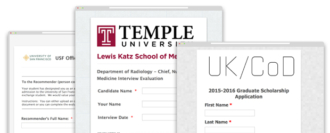


















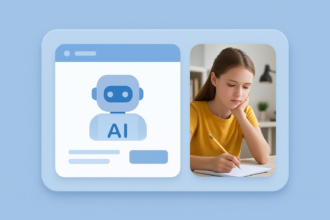










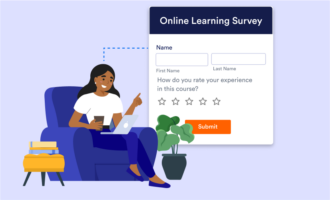


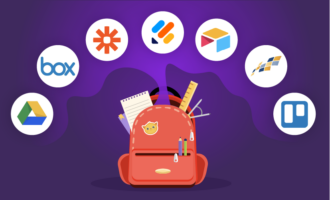










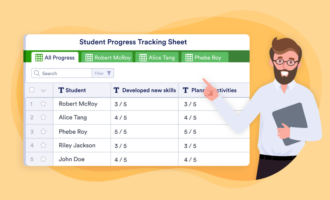






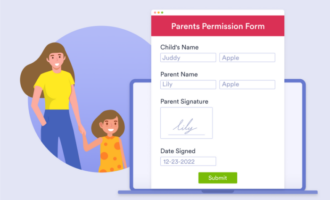




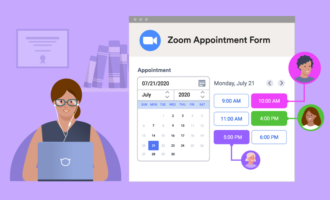






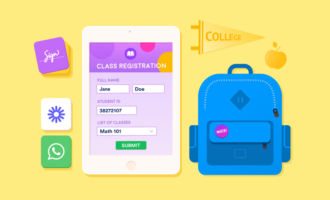


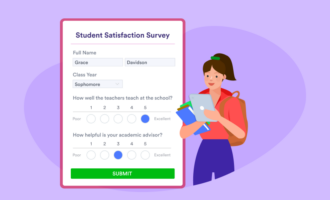













Send Comment: